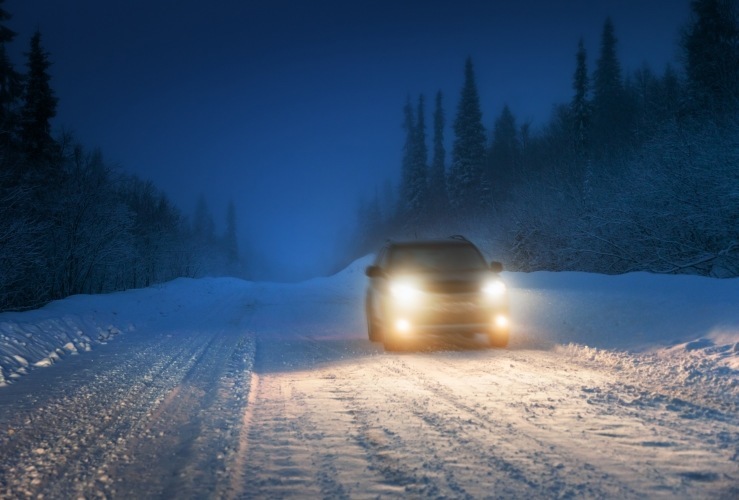
The nights are long for the next few months, so if you need to take your car out then there is a fair chance you will have to drive in the dark. On top of that, weather conditions are likely to be much harsher and you may find yourself caught in heavy snow or fog. All of these things mean that your visibility will be dramatically reduced, so it is imperative that your car lights are all working.
You need to ensure that your dipped headlights, high beams and fog lights are in full working order as well as your rear and brake lights.
When visibility is low it can be useful to have your dipped headlights and rear lights on to make yourself more noticeable to other drivers. This is particularly true when you are driving on a motorway or dual carriageway when you are all travelling at speed and need to leave more distance between each other.
Fog is a much more common occurrence during winter and this can reduce visibility considerably. At night this is especially true and the main beam tends to only make the problem worse. This is why you will need working fog lights because, as the name suggests, they are the best for improving visibility in these conditions. However, remember to switch these off when the fog clears as these can dazzle other road users.
As well as the safety side of having working lights, you also have a legal obligation to do so. By law, you have to have all sidelights and rear registration plate lights lit between sunset and sunrise when your car is running and you must use headlights at night and when visibility is reduced. Therefore, with longer nights and more harsh weather conditions, you will be caught more easily if you fail to follow these rules.
It may be worth carrying a light kit with you in case one of your lights fails so that you can change bulbs quickly and easily. Alternatively, it is best to take your car to the nearest garage to fix the problem.




